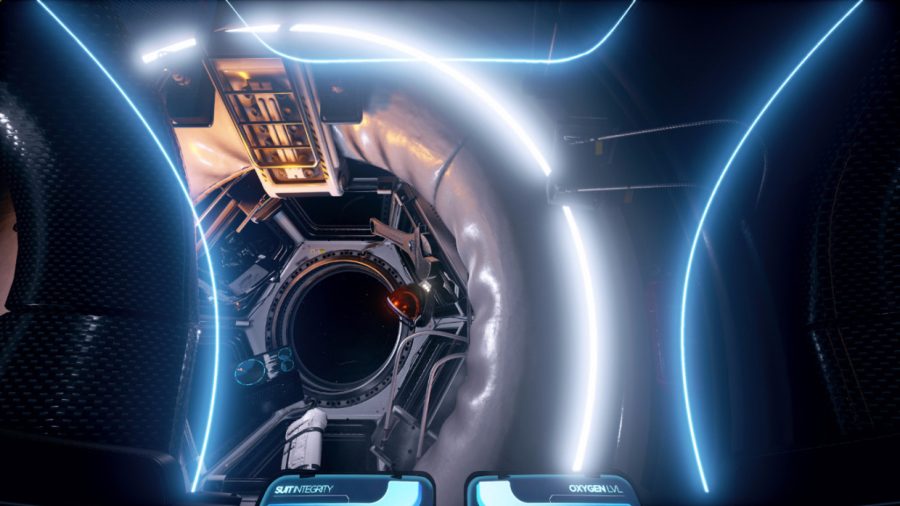This review was originally created in October 2018 for HTC, targeted to their Vive/Vive Pro (VIVEPORT). It is reproduced here without alteration.
The 2013 film, Gravity, starring Sandra Bullock and George Clooney, was a convincing dramatization of how a near future low Earth orbit space disaster might unfold. By focusing on how the astronauts dealt with each increasingly dramatic event, the filmmakers brought a welcome personal touch to a movie that could have credibly stood on the magic of its special effects, and use of 3D, alone.
The much earlier 1968 film, 2001: A Space Odyssey, on the other hand, while having similarly impressive special effects relative to its era, had a more epic, sweeping story, dealing with themes of existentialism, human evolution, technology, the possibility of extraterrestrial life, and artificial intelligence (AI) along the way. It’s perhaps this latter theme that the film is most known for, where a rogue AI, HAL 9000, makes life unbearable for those onboard the spacecraft, Discovery One, which is bound for Jupiter.
By taking inspiration from both of these iconic films, Homebound has big shoes to fill. The game takes the overcoming-a-series-of-disasters theme from Gravity and mashes it up with the AI “companion” theme from 2001: A Space Odyssey. As a way to make these themes more its own, Homebound introduces something that was mostly missing from those films, touches of humor, including a much-appreciated The Simpsons reference.
Designed as a seated or standing experience, you use both Vive controllers to navigate through the three different set pieces, or levels: Deep Space, Earth’s Atmosphere, and Earth. Each level takes about 10 minutes of play time, for a total of around 30 minutes of total gameplay. There are also time attack and free roam modes. In time attack, you try to beat your personal best time or challenge the best times of others. In free roam mode, you can explore the environments at your own pace.

Homebound definitely proves more experience than game. There are limited opportunities for interaction, including trying to orient yourself correctly, pushing some buttons, and moving some levers. Fortunately, as an experience, Homebound proves attractive. The visuals, save for a few disappointing textures here and there, are downright beautiful. Of course, you’ll need a fairly powerful computer to experience this game at its highest fidelity.
Unfortunately, it’s not the visuals, level of interactivity, its inspirations, humorous touches, or anything else that really defines Homebound as much as its potential for motion sickness. Floating in space, the general jerkiness of just looking around, etc., simply don’t lend themselves well to the general disconnect with what your body is doing in the real world. As such, If you’re at all prone to virtual reality motion sickness, steer clear of this one. I know I had my ginger candies working overtime for this one, even when I just stuck to playing individual 10-minute sections.
Ultimately, while Homebound does a great job of bringing the hands-off experience of watching Gravity to the more immersive potential of virtual reality, the concessions made along the way make it a difficult recommendation. Controls can be imprecise and the disconnect between what you’re doing in-game and what your body is doing in the real world can be brutal on the stomach. If you can tolerate the motion sickness and treat this mostly as a slightly more interactive short film, you may still find value here, particularly since the visuals are genuine stand-outs. For everyone else, the price to pay for experiencing this eye candy might be a bit too much.
Score: 2 out of 5 stars.
Homebound is available on Viveport or with a Viveport Subscription.






 Your total news and information resource for all things Science, Technology, Engineering / Mathematics, Art, and Medicine / Health.
Your total news and information resource for all things Science, Technology, Engineering / Mathematics, Art, and Medicine / Health.
Leave a Comment